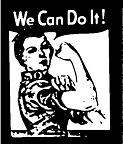home / teaching reading / homeschooling / gifted kids / breastfeeding / crafts |
|
|
"A good education for every child
does not mean the same education for every child. " Please use what works for you and your
child and ignore the rest. Every
child is different. If this
information does not seem to be a good fit for your particular child, then keep
looking and experimenting until you find what works. This Web Page by Pauline
Harding for Art Nurk, hardingpj@yahoo.com |
Bibliography : Learning about Teaching Reading Phonics from A to Z, a Practical Guide, by Wiley Blevins If you can read only one book about phonics, make it this one. Everything you need to understand phonics instruction. Background info, games, word lists, phonics, phonemic awareness, suggestions for books to read aloud, assessment help, sample lessons. Not a phonics curriculum, rather the information you need as a teacher. A really great reference to have on hand. Inexpensive ($17) too. Best phonics book ever. How To Teach Your Child To Read From Two Years: Over 125 Activities for Rapid Reading Progress, by Bill Gillham This book is an excellent source of reading activities and games. If you could read only one book about teaching young children, this would ideally be the one. It’s got good stuff for older kids, too. Unfortunately for you, I picked it up cheap at a book store in Covent Garden in London. Fortunately, if you really want it, you can get it from www.amazon.co.uk. Reading Magic, by Mem Fox An excellent book. Easy and quick to read, but covers the basics of why reading aloud is important, with lots of ideas about how to do so. It would be a particularly good book for a parent who was not read to as a child. Note – Mem has one child, who learned to read largely from being read to. Some children may need more phonics and/or more direct instruction than she advocates. She also has a web site at www.memfox.net . The Read-Aloud Handbook, by Jim Trelease An excellent book! This focuses on encouraging literacy, rather than the details of teaching reading. Lots of good info about reading aloud – how, why, etc. Includes a list of great read-aloud books. Definitely worth reading. Overcoming Dyslexia, by Sally Shaywitz A friend with a dyslexic son swears by this book! Very technical, but also inspriational. Teach Someone To READ: A Step-by-Step Guide for Literacy Tutors This book is designed for people who are teaching adults to read. I did find it had some interesting things about assessment, and the importance of using materials that interest the student, though much of it didn’t apply. Literacy: Helping Children Construct Meaning, by J. David Cooper. Rabidly anti-explicit-phonics-instruction, but helpful for other parts of teaching reading. My influences
These books were useful to me when teaching my older two children to read. They are not “how to” books, but rather stories of teachers. Teacher, by Sylvia Ashton-Warner The author lives in New Zealand and teacher Maori children. This is not an easy read, nor is it a how-to. I also enjoyed Myself, by this author, in which she explores balancing her roles as teacher, mother, wife, artist, and lover. Doing Words: Using the Creative Power of Children’s Personal Images to Teach Reading and Writing, by Katie Johnson I really liked this book, by a Maine teacher, about teaching her students to read. She is influenced by Sylvia Ashton-Warner. |
